Hammam: device and rules of visiting.
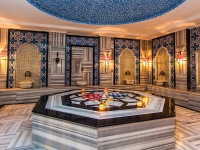
Hammam: what is it, how to steam properly, what the temperature should be in a Turkish bath? These questions often arise not only for those who are passionate about traveling around the world. In modern fitness clubs and spas such service is also widely represented. To understand these issues will help a detailed overview that allows you to study the structure of the hammam, its differences from the sauna and the Russian bath.
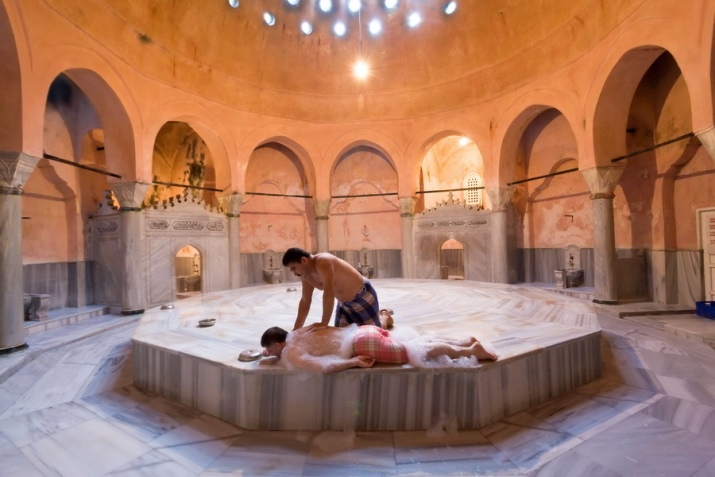
What is it?
In the Arab countries and in the East there are no baths familiar to Russian people. But there is a hammam - so called a special structure used for washing and receiving health-improving procedures. Classical Turkish bath strikingly differs from all the others in the luxury of decoration - in this it can easily be compared with the famous Roman baths. Real hammam looks like a royal palace, with marble finishing of walls and floor, tiled tiles, ceramics, mosaic.
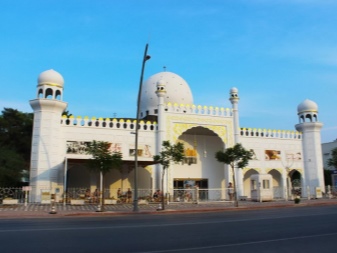
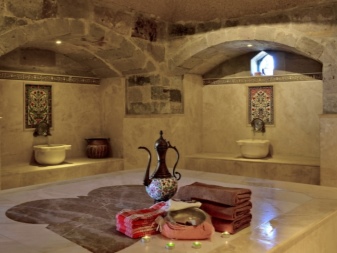
The vaulted domed ceiling can be called a peculiarity of the interior of the eastern bath. This was done to allow steam, which turns into condensate at high humidity, to flow down the walls through special trays. Not only the interior is different. Hammam works on a completely different principle. There are no customary furnaces and other heating devices in the halls, the heat is distributed evenly thanks to a special system of pipes, through which it is fed.
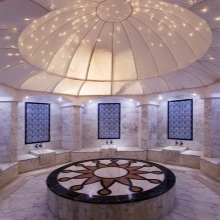
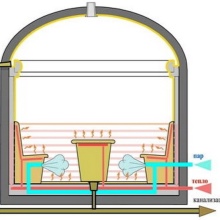
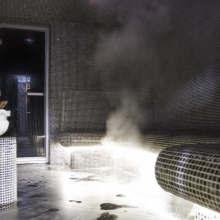
Also differs and the microclimate in the room. The standard temperature in the hammam ranges from 35 to 50 degrees Celsius. Norm of humidity also significantly differs, this figure can reach 100%. Often, to create a special atmosphere used valuable oils, spreading its fragrance. In this case, a visit to the Turkish bath turns into a real wellness procedure.
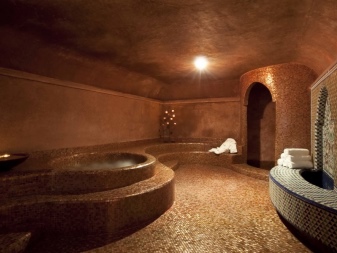

History of its origin.
Hammam really can be called a kind of heritage of Roman thermae. Its name, which literally means "hot water" in Arabic, was not given by chance. To heat the air in the room in ancient times they used a large cauldron filled with water. The boiling process produced steam that flowed through special ducts to other rooms.
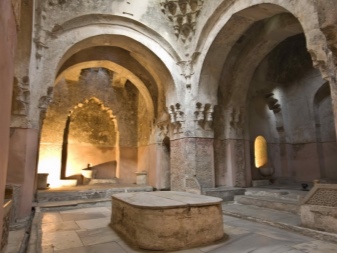
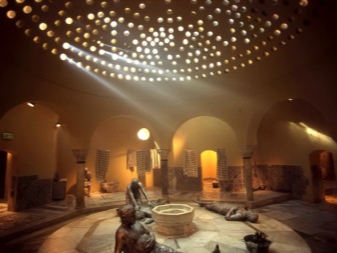
Since in the East visiting a bath has always been a matter of obligation, it was mentioned in their speeches by all important thinkers, including the prophet Muhammad, people did not neglect such procedures. Especially hammams became widespread in Turkey, a country with strict Muslim laws. The magnificent decoration of the interior is also directly connected with the love of the inhabitants of these hot countries for luxury.
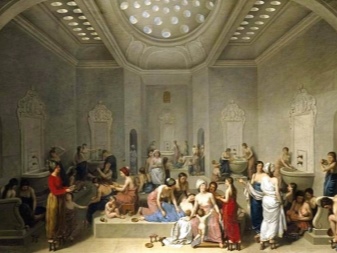
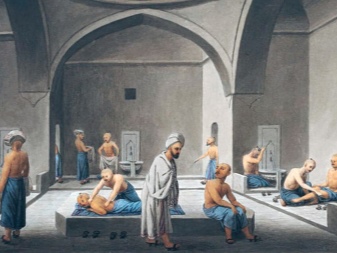
Turkish baths laid the beginning of the "hammam philosophy", a strict set of rules that defined the sequence of visits to different rooms and the division of such buildings into women's and men's.
Initially, existing buildings were used to equip hammams. Most often, they converted Roman thermae preserved from past times, sometimes temples that once belonged to Christian and other denominations were transformed into Turkish baths. For example, the Old Baths or Eski Kaplica in the city of Bursa were built in the 6th century, under Emperor Justinian. Also historical buildings can be seen in Istanbul. But in Ankara the culture of bathing is presented at a more modern level, and for the visit is available for more than 100 such sites.
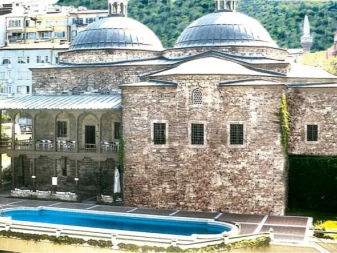
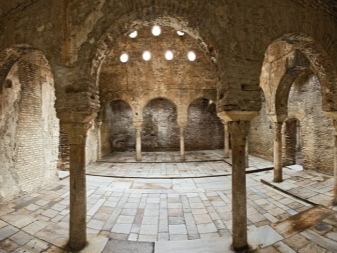
Interestingly originally hammams were separate - for women and men. Later, due to lack of funds, they began to build one building, but to allocate days when representatives of different sexes could visit the steam room. In Muslim countries, this order remains to this day.
The hammam quickly turned from a purely functional object for hygiene into a kind of hobby club. They would come here all day long, drink coffee, treat themselves to fruit and sweets, and have massages and other cosmetic procedures. Today, the culture of the hammam is so widespread that it has entered into the traditions of most peoples of the Middle East and Muslim countries in Asia.
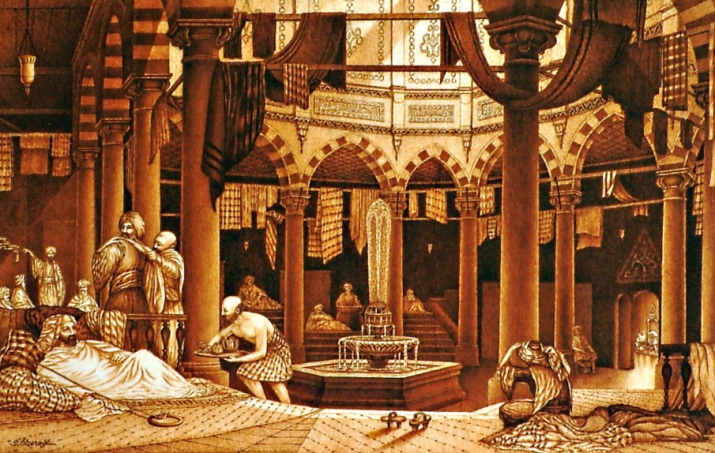
What is the difference between sauna and Russian bath?
The difference between the different types of baths is often the subject of debate. Each has its own peculiarities. The main differences are easiest to consider in comparison.
- Russian bath. It is characterized by the presence of a wooden log cabin, the division of rooms into a steam room and a bathing room, sometimes a rest room is added to them. Inside there is a furnace, heated on white or black, a container of water. The air inside is heated up to 50-70 degrees and the humidity level is set to 70%.
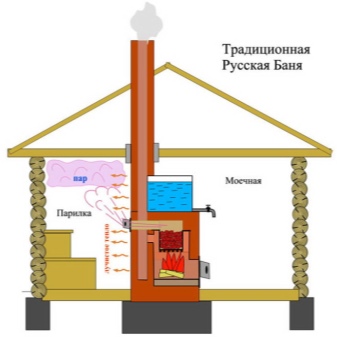
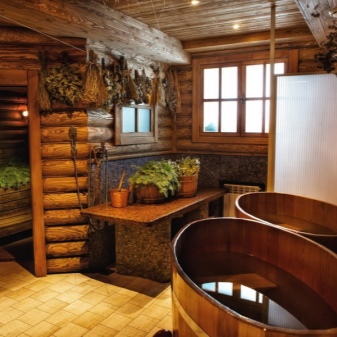
- Finnish sauna. It is arranged in the house or as a separate structure of a log or timber. Inside there is a separate room with high temperature - a steam room, trimmed with wood, doors and partitions are often made of tempered glass. Heating mode here is the highest possible - up to 100-120 degrees Celsius, the humidity level does not exceed 15%.
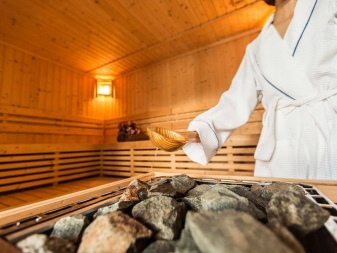
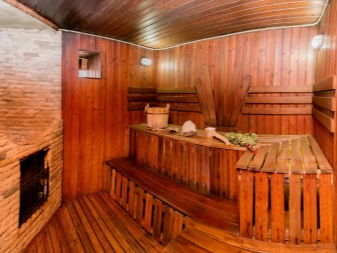
- Hammam. The structure is made of clay, stone or bricks, lined with marble or travertine. Only the locker room is dry and the rest of the room is designed as a large room with washing and relaxation compartments without doors, there is also a separate room with a steam generator and an oven. The humidity inside reaches 80% and more, the maximum comfortable temperature - about 45 degrees.
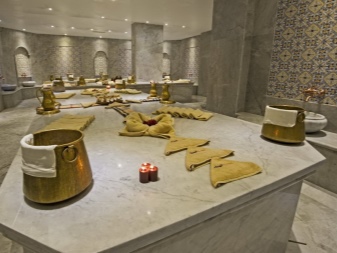
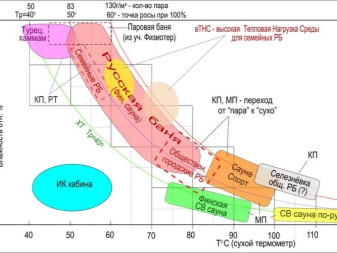
The main difference between the different types of baths lies in their effects on the body. Visiting the hammam is rather a health ritual, which allows you to fully relax and unwind. Light moist steam gently affects the body without becoming a "shock therapy".

It is the best choice for beginner spa lovers or people who have problems with heart and blood vessels.
Design and description of the rooms
The Turkish bath in its traditional representation does not have a steam room with radically different temperature regimes. It itself is a separate building, built in the Eastern style, with a domed ceiling. The internal layout is also markedly different from other types of baths. There are no doors - only a huge hall with secluded additional chambers. Tiles are used in finishing; heated beds or chebek-tashi are made of marble.
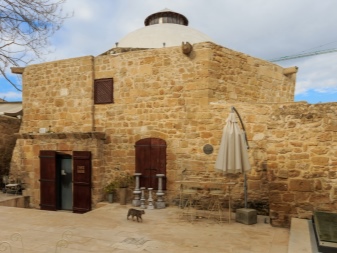
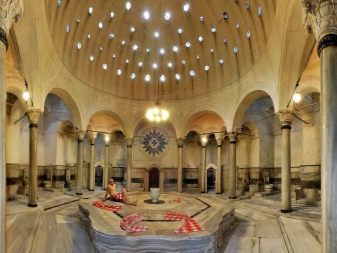
Traditional oriental hammam always has two separate entrances, located on opposite sides of the building. From these, one moves to the main part of the Turkish bath. A special warm hall leads from the cold chambers with locker room and toilet to the wet room (the hall is separate for men and women). This complex layout has a direct effect on the gradual change of temperature and humidity modes. It allows you to easily adapt to the changes.
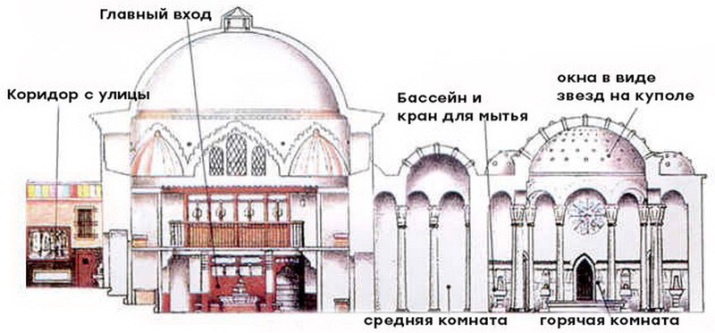
We can say that hammam is a public bath with its own rules and traditions. Bath attendants and bathmaids are necessarily present here, helping guests to perform the ritual of ablution. All rooms of the hammam have a special name and purpose. And for the planning of the bath used as a model an outstretched palm of a man with five fingers. On these points it is better to stop in detail.
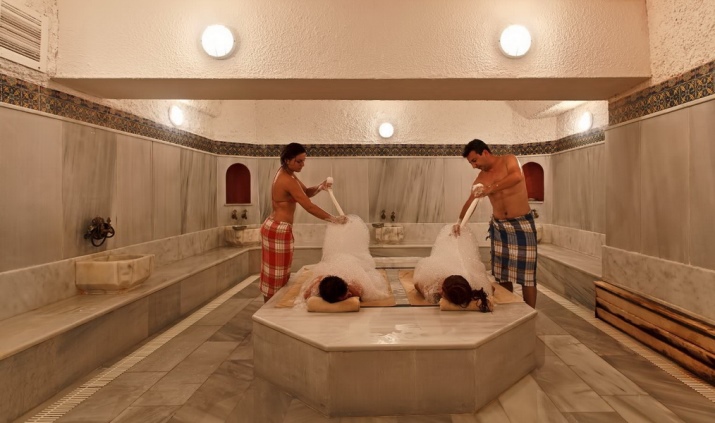
Camekian
Under this name in Turkey and other countries of the East, the anteroom is known. Here is a dressing room, where one can remove excessive clothing. Inside, there are also marble benches and tables for tea parties. The interior is characterized by the decoration with tiles or natural marble, the lamps are located on the walls.
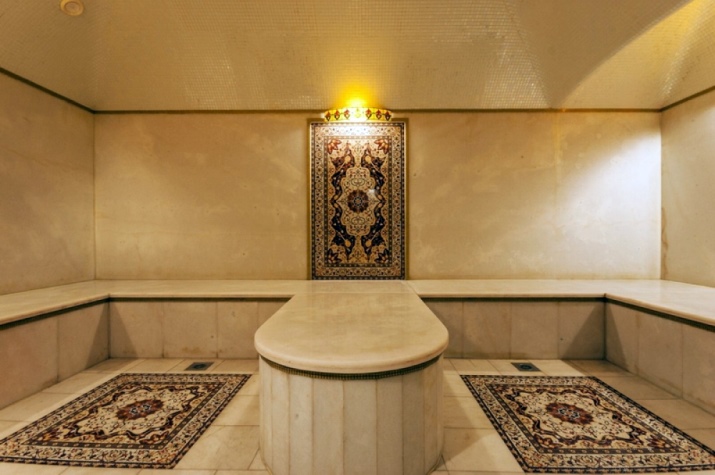
Hararets
This is the steam room itself, with the highest temperature. This is where the bathhouse attendants show their skills to the full. The room inside is finished with marble. In the center there are wide heated benches on which the guests recline. The benches are low in height, placed around the perimeter or in rows. There are no heating devices, but there are pipes that carry the hot steam. In some countries, this room is called syjaklyk. In its central area there is a marble stone.
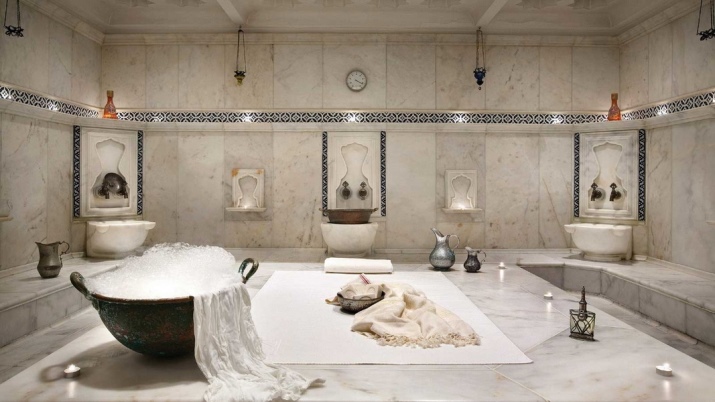
Pestemal
The shower room in the Turkish bath has this name. The people go here from the hararets after they have warmed up properly. Interestingly, under the name pestemal or peshtemal are also known towels used in the hammam. Sometimes the name halvet is also found.
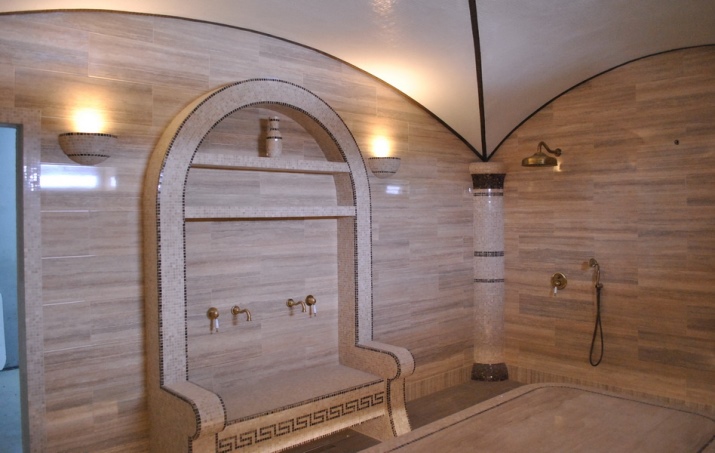
Sogukluk
This room is visited first after the jamekan. It is comparable to the steam room, the temperature inside is kept at +35 degrees Celsius. Here there is a washroom, there may be access to the toilet. When visiting the hammam for a stay of at least 20 minutes to allow the body to get used to the changing temperature regime.
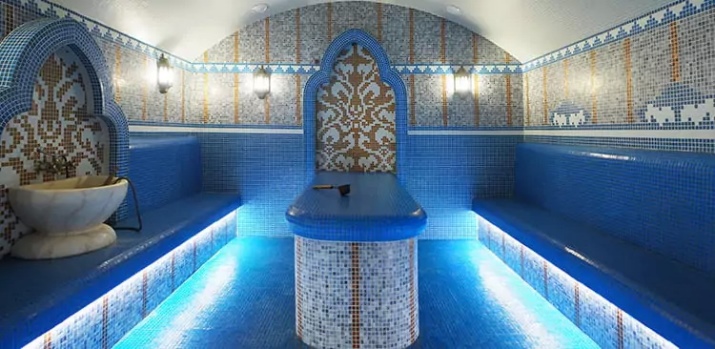
Other elements of the layout
In each hammam, in addition to the main rooms, there are noteworthy details. For example, there are 3 pools with different water temperatures - from 45 degrees to room temperature, about +25. In the basement of the hammam is his "heart" - a furnace with a boiling boiler as a steam generator. Hidden from the eyes of visitors remains a system of pipes in the floor, walls, benches, which heated air is distributed to other rooms.
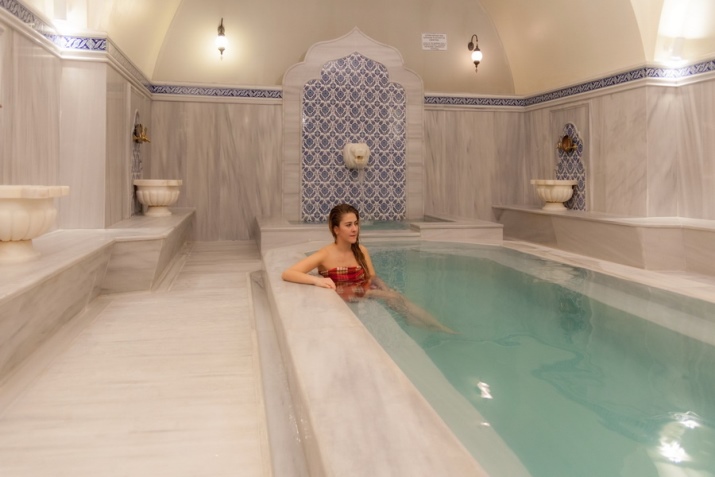
Also in the classic Turkish bath there is a chebek. This room is considered the place where the body is prepared for the change in humidity and temperature. Inside there are benches heated to a certain level. It is from the chabek that guests pass on. In addition, the interior may include a cafe or kulhan, a separate room for tea parties, unhurried conversation and relaxation.
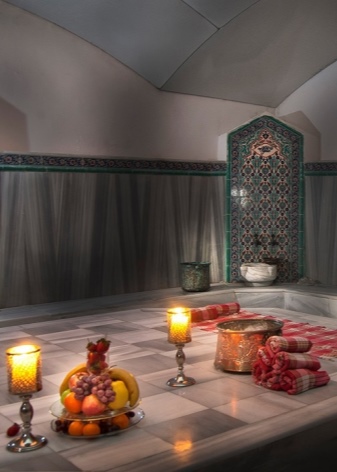
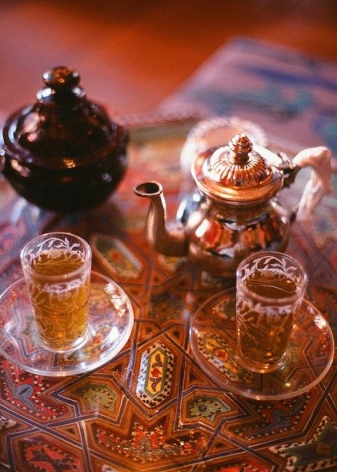
Necessary accessories
The list of things you need to take to the hammam should be studied beforehand. The set of accessories for rest in the Turkish bath is quite extensive and includes a lot of absolutely necessary things.
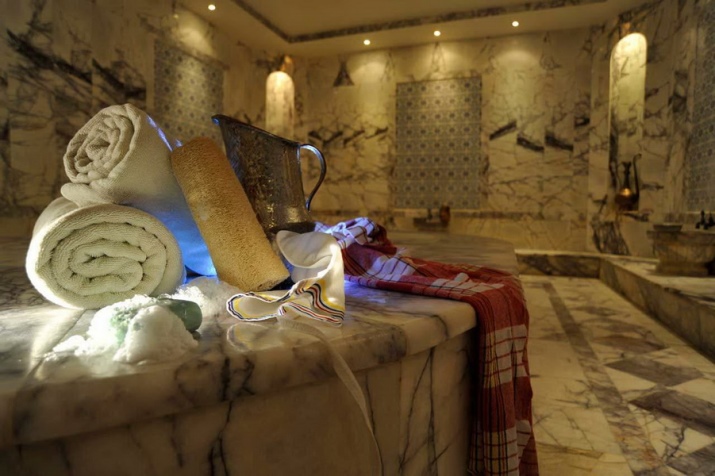
It is worth saying at once that both men and women inside, the rooms do not remain completely naked.
Going to the hammam, do not deny yourself the pleasure of observing all the rules of rest in the humid steam room. For this you will need the following.
- Peshtemal. A special towel with fringes, which is belted around the body. Its width should cover the chest, reaching the middle of the thigh. Most often made of natural cotton or silk fibers. You will also need a towel-covering over the shoulders and a turban for the head.
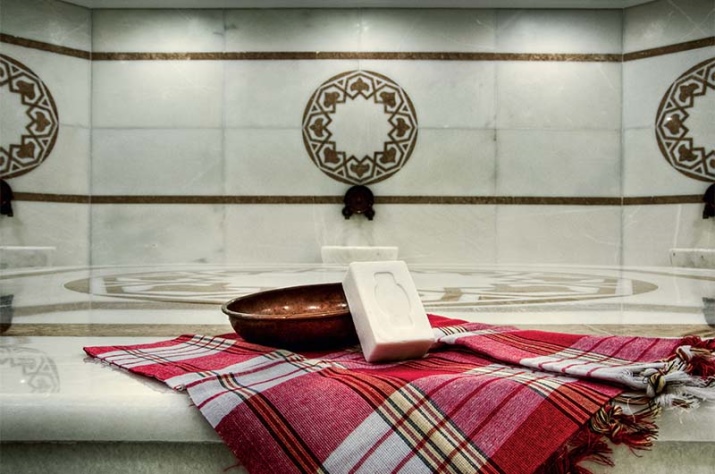
- Nalin. Special sabots or sandals with wooden soles. Without them it would be quite uncomfortable to step on the hot floor of the hammam. Traditionally, this element is decorated with copper plates or nacre, silver inlays, beads. In the traditions of the East the nalin can be complemented by bells.
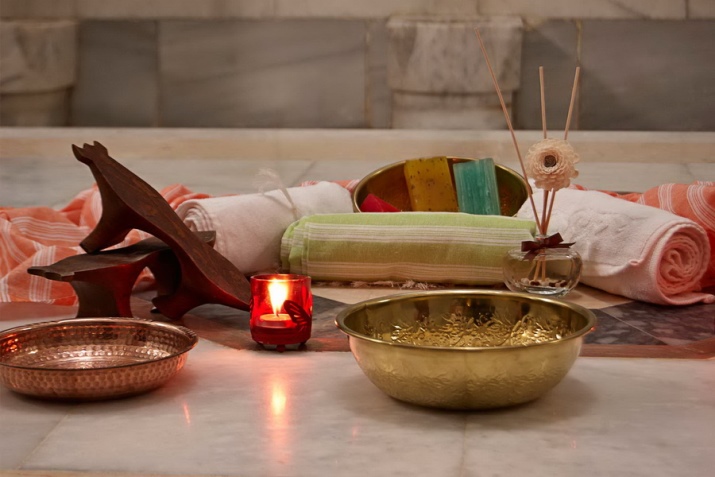
- Bowl for pouring water. It is made of copper or silver and decorated with mosaics. In modern hammams there are simpler versions without rich decorations.
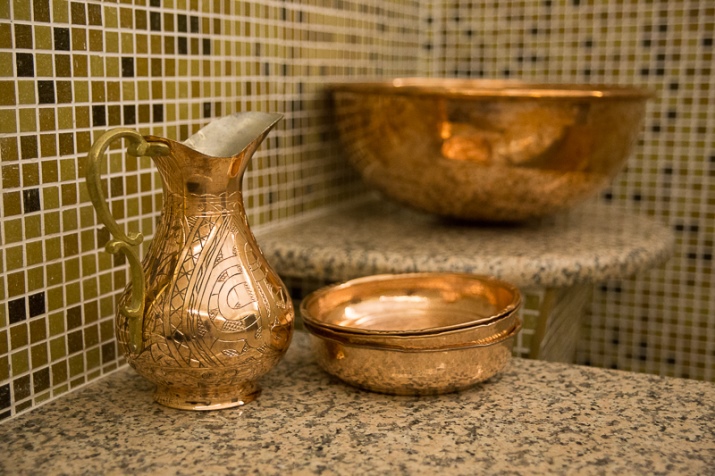
- A metal case for accessories with holes for water outflow. Soap, a mitten for massage, a comb for combing hair are usually put in it. Usually made of copper. Also separately women take a special box for jewelry.
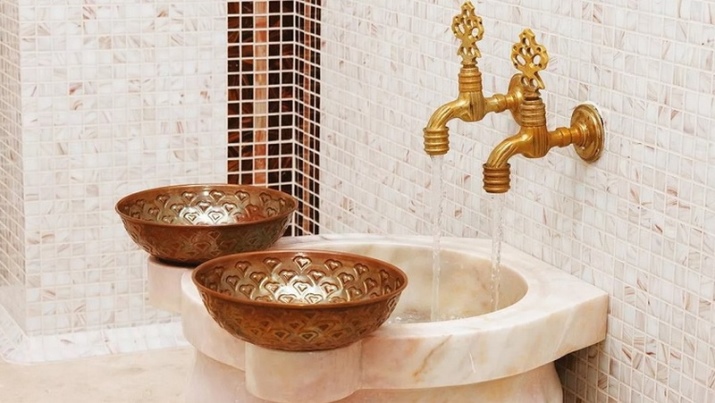
- Keze. A massage mitten made of stiff natural fibers. With its help, the skin can be scrubbed.
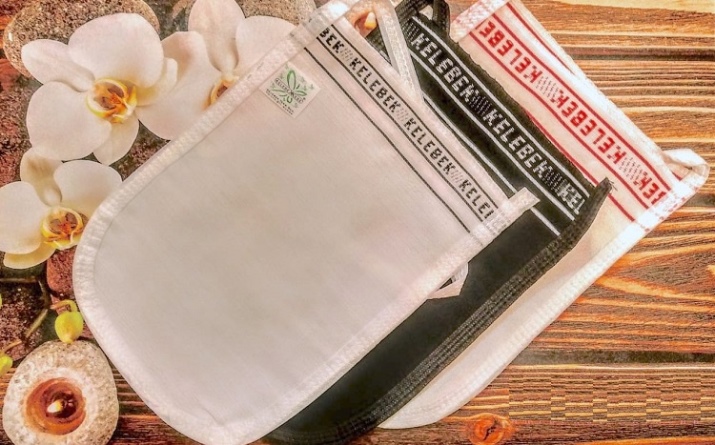
- Carpet pad mat. It is used in the dressing room to stow things.
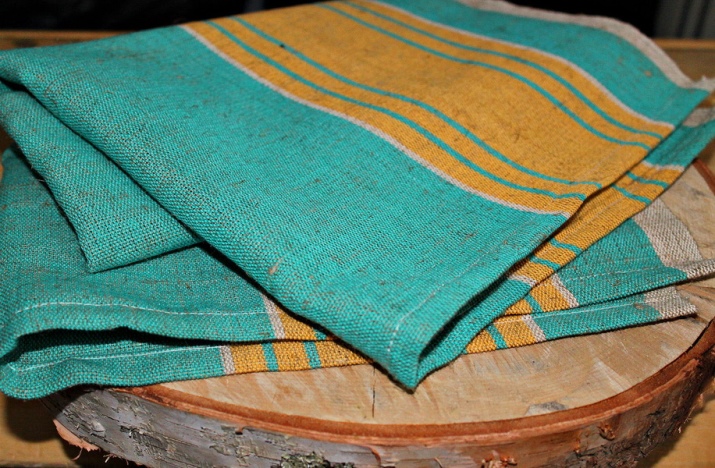
Arab women who adhere to Islamic traditions necessarily take other items with them to the Turkish bath. These include a long-handled mirror, separate henna bowls, and eyebrow dye. Among the obligatory accessories is also antimony, which is used to liner the eyes. After visiting the hammam body care must include the application of rose oil on the skin - a natural cosmetic with a characteristic pleasant aroma.
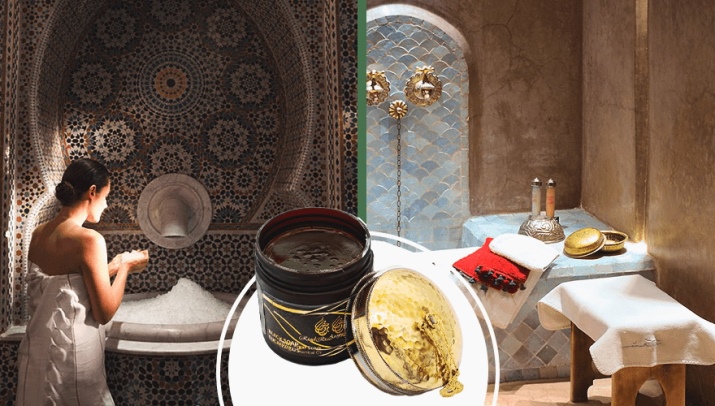
Rules of visiting
Hammam is not just a place for rest and relaxation. It is a real ritual with its own rules and traditions. Going to the Turkish bath in a Muslim country, it is better from the beginning to find out how to visit the institution correctly. For example, in Arab countries for women and men are designated different entrances and days. In addition, the shallow pool located in the central hall should not be used for bathing - the water from it evaporates, saturating the air with moisture, ablutions are prohibited here.
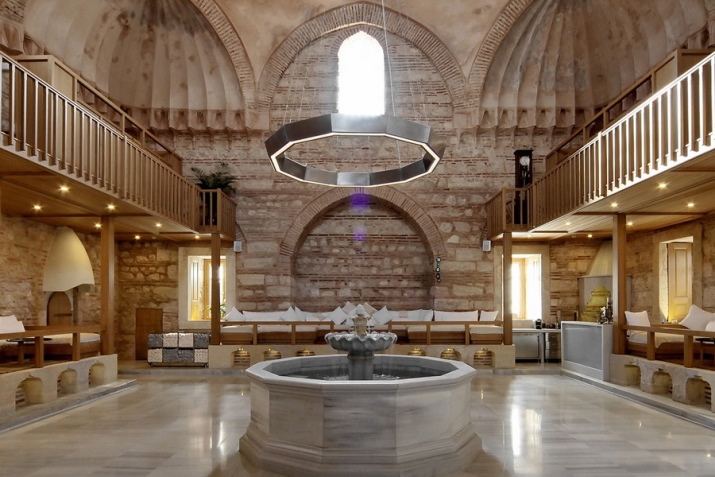
Prior preparation is also important. Alcohol is not accepted in Turkish baths, it is strictly prohibited. Before the hammam you should not drink too much, either. It is recommended to give up eating two hours before the procedure.
Also it is necessary to know how to use the Turkish baths properly. It is recommended not to visit such an institution too often, otherwise you can damage the skin. It is better to go once a week, sit for a long time, getting a full-fledged relaxation session. Basic recommendations also include the following points.
- Do not rush, avoid unnecessary noise and bustle. In the hammam is customary to sit or lie down, relaxing to pleasant oriental music, inhaling the aromas of essential oils.
- Undress in a special room. Then take off the rest of your clothes in the next room, visit the shower, and wrap yourself in a special towel or sheet.
- Be sure to warm up your body beforehand. For this purpose, there are special beds in the hammam that allow you to gradually get used to the rising temperature - you will put an individual towel on them. In different areas it may be lower or higher. It is better to be guided by your own comfort.
- Go to the bathing section - the steam room. Here there are specialists who will help you perform a peeling of the whole body. The massage is quite tough, but steamed and moist skin tolerates it well. Then you can move on to the soap treatment of the body - the usual sponge is not used here, you can not wash yourself either, everything is done by the bath attendant.
- Lather up your body. You can buy all natural cosmetic products you need at the Turkish bath. In addition, you can use other skin care products. The residue is washed off in the shower, then you can visit the baths or the Jacuzzi.
- After the pool, you can go to a special room for tea parties. Here both men and women spend their time with an unhurried conversation. You can make new acquaintances, exchange impressions, but without being too intrusive.
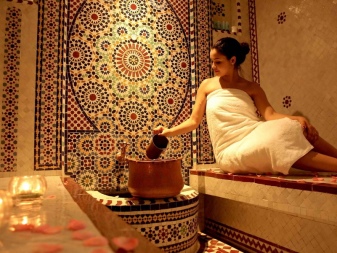
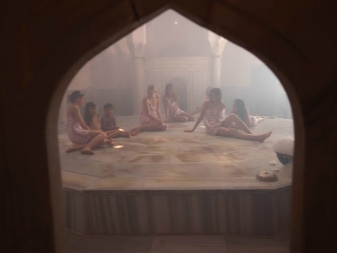
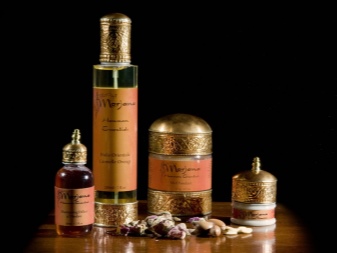
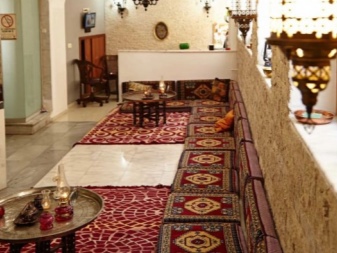
Average duration of a visit to the hammam is from 1.5 to 2 hours. This is quite enough to achieve a recovery effect. The body can rest and renew, the muscles relax and the skin glows. Turkish bath has practically no contraindications. However, in the presence of chronic severe diseases, implanted cardiac pacemaker, during pregnancy is better to get a prior consultation with your doctor.
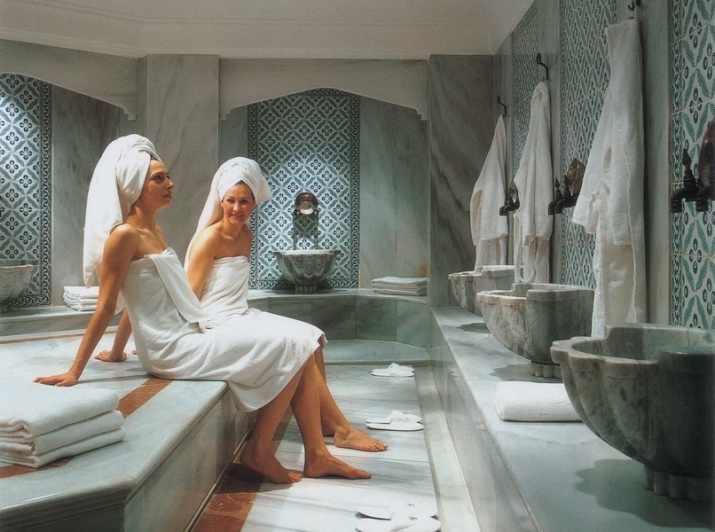
If you are allergic to aromatic substances or herbal extracts it is better to clarify in advance the possibility of their use in a particular hammam.
In Eastern countries, bath attendants act quite unusual for people of another culture. Their work is somewhat reminiscent of a perfectly rehearsed performance of an artist. It is worth preparing yourself for the fact that the body massage will be hard, intense, with all areas being rubbed with a special mitten.
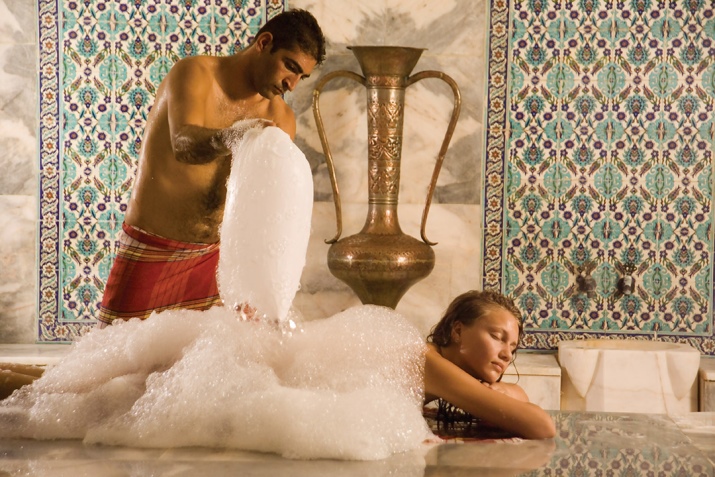
At the end of the session, the bath attendant will stand with his feet on the client. You should also be prepared for this, not to be aggressive.




